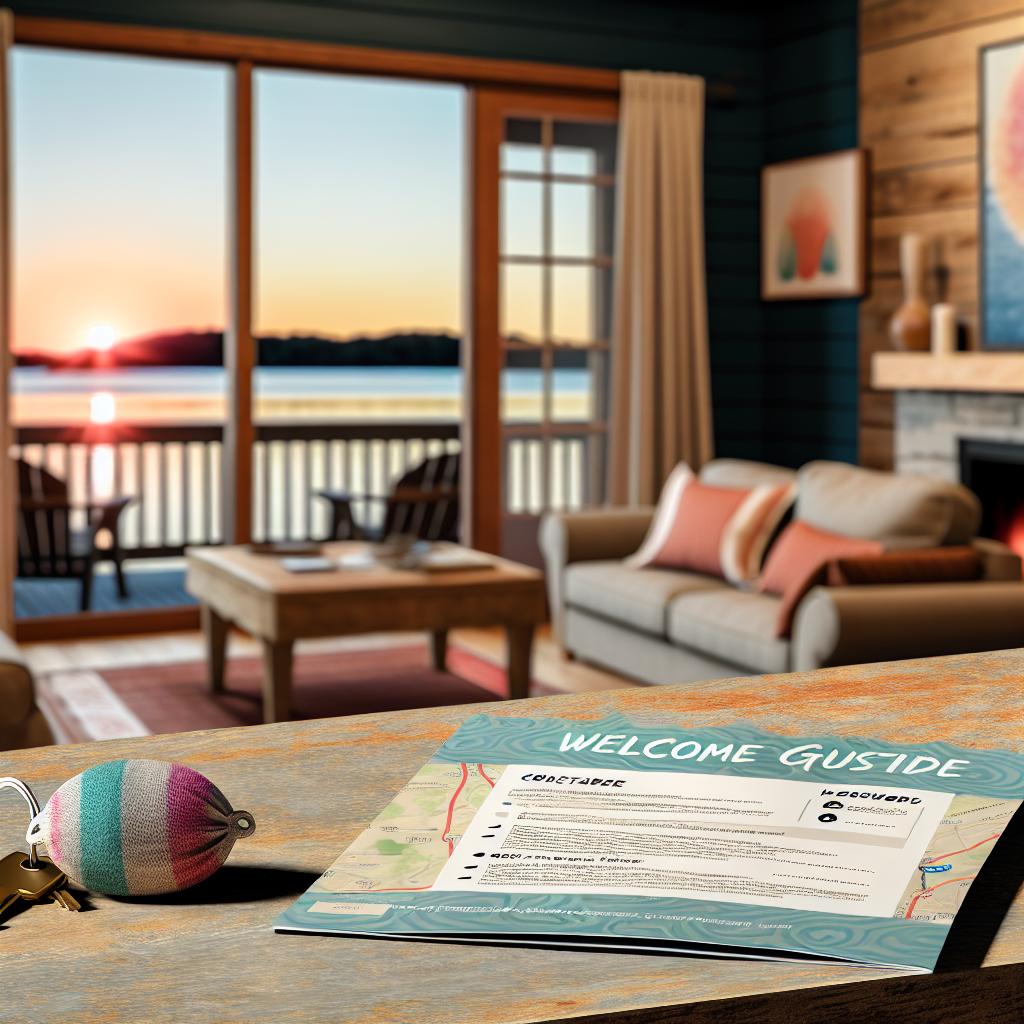Introduction to Creating a Guest Welcome Guide
A well-crafted guest welcome guide can significantly enhance the experience of visitors staying at your vacation rental. This essential document provides guests with all the necessary information to make their stay enjoyable, comfortable, and hassle-free. It also serves as a tool for communicating expectations and ensuring that guests have an understanding of the property’s features and rules, making their visit as seamless as possible.
Purpose of a Welcome Guide
The primary objective of a welcome guide is to ensure that guests can easily access information about your property, local attractions, amenities, and expectations. This not only improves their overall experience but can also lead to positive reviews and repeat bookings. A well-prepared guide can be a deciding factor in the overall impression guests have of their visit.
Providing detailed information can help preemptively answer questions guests might have during their stay, reducing the need for them to contact you with inquiries. By addressing their potential concerns or curiosities right from the start, you create a sense of confidence and satisfaction. Moreover, a welcome guide can reflect your commitment to hospitality, showcasing your dedication to ensuring a memorable experience for each visitor.
Key Components of a Welcome Guide
A comprehensive welcome guide typically includes several components to ensure guests have all the information they need during their stay. Each section should be clearly labeled for easy navigation, and the information should be organized logically, allowing guests to find what they are looking for quickly and efficiently.
Property Information
Start with the basic details about your property. Include the full address, contact information, and emergency contact numbers. It’s also helpful to provide a local map with marked nearby amenities like grocery stores, restaurants, and gas stations. This initial section sets the tone for the rest of the guide and provides guests with the foundation they need to feel oriented.
Consider incorporating visual aids such as maps and diagrams, which can enhance understanding and help guests familiarize themselves with their surroundings. For digital versions of the guide, including clickable links to maps or contact numbers can add a layer of interactivity and convenience.
Check-In and Check-Out Procedures
Clearly outline the check-in and check-out times. Provide instructions for accessing the property, including any codes for a keyless entry system or directions for locating the key. Specify the expectations for check-out, such as where to leave the keys and how to adjust the thermostat. This clarity prevents miscommunication and facilitates a smooth transition for both the guest and the host.
Including a simple checklist for both check-in and check-out procedures can be beneficial. This can serve as a quick reference for guests, ensuring they do not overlook any critical steps. Additionally, addressing potential questions about late check-out or early check-in policies can preemptively address common queries.
House Rules and Guidelines
Detail any house rules, such as noise restrictions, pool use, and areas that are off-limits. Explain the policies concerning smoking, pets, and additional guests. Clearly state the consequences of not adhering to these rules to ensure guests understand the importance of compliance.
Presenting house rules in a way that emphasizes care for the property and consideration for future guests can foster a cooperative spirit. A polite but firm tone when discussing potential consequences demonstrates a balanced approach to maintaining order while respecting the guests’ autonomy.
Amenities and Features
List the amenities available to guests, such as Wi-Fi access, kitchen appliances, and laundry facilities. Provide instructions for using any unique features like a fireplace or hot tub. Include any passwords needed for Wi-Fi or subscriptions to streaming services.
A detailed description of the property’s features, accompanied by instructions or troubleshooting tips, can empower guests to make full use of the amenities. Providing this information upfront prevents frustration and enables guests to enjoy the conveniences offered.
Local Attractions and Recommendations
Offer tips and recommendations for local attractions, dining, and entertainment. Highlight popular tourist spots, local favorites, and off-the-beaten-path experiences. Consider including links to TripAdvisor or other tourism websites for more in-depth information.
Personal recommendations, perhaps accompanied by a short anecdote or insight, can add a touch of authenticity and warmth to this section. Guests are often eager to explore their surroundings, and your guide can serve as a trusted resource for discovering new adventures.
Transportation and Directions
Provide details on transportation options, including public transit, taxi services, or car rental agencies. Offer directions from major transit hubs like the airport or train station. If parking is available, give precise instructions on where guests should park their vehicles.
Offering a variety of transportation options, from budget-friendly to more convenient choices, caters to the diverse needs of guests. Ensuring clarity in directions, potentially supported by visual aids, can reduce the likelihood of confusion or stress related to travel logistics.
Emergency Information
Include contact information for emergency services, nearby hospitals, and pharmacies. It’s also prudent to provide instructions on what to do in the event of natural disasters common to the area.
Safety is a top priority for travelers. By including a comprehensive section on emergency preparedness, you provide peace of mind and demonstrate a genuine concern for the welfare of your guests. Updating this section regularly to reflect current contact numbers or procedures is crucial.
Conclusion
In summary, an effective guest welcome guide serves as a vital resource for your guests, enhancing their stay and minimizing potential issues. By providing clear and concise information, you help ensure a positive experience that guests will appreciate and remember. Regularly update the guide to ensure all information remains accurate and relevant.
Taking the time to craft a detailed, user-friendly guide underscores your commitment to outstanding hospitality and can contribute significantly to the success and reputation of your rental property.

 How to create a guest welcome guide for your vacation rental.
How to create a guest welcome guide for your vacation rental.